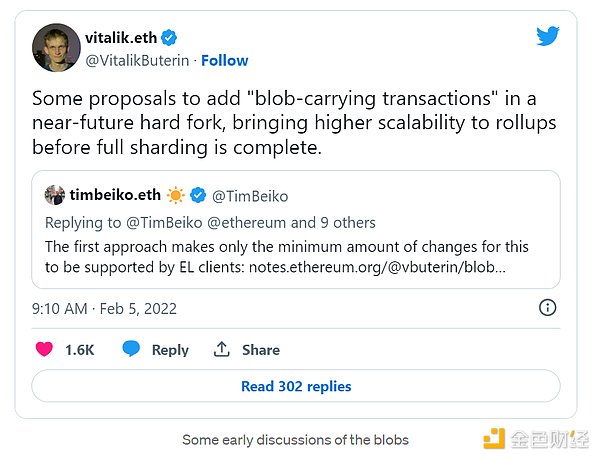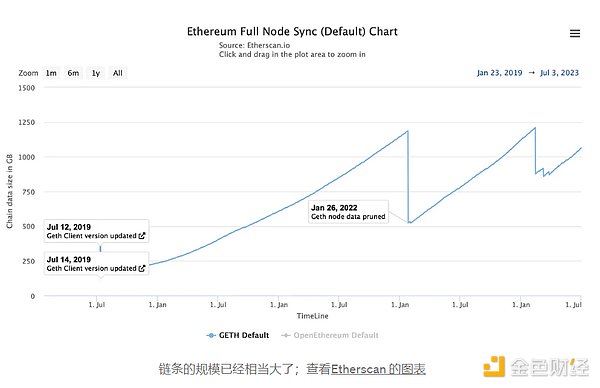Ethereum’s core developers are working on another major upgrade. This upgrade will be centered around Ethereum Improvement Proposal #4844 (EIP-4844). They have designated a new portmanteau “Dencun” to refer to this upgrade (combining “Deneb” and “Cancun” for updates to the consensus and execution layers, respectively).
EIP-4844 may reduce transaction costs on the mainnet, but its focus is on reducing costs on Ethereum’s layer two. To achieve this goal, the EIP is entirely about data. The EIP will improve how L2s encode data on the mainnet. L2s currently spend most of their costs writing to Ethereum mainnet to validate their state (using transaction call data). This also adds costs to the mainnet. You can see this in Etherscan’s “Gas Spent” ranking list, where 5%-10% of mainnet costs are typically related to L2s, such as zkSync and Arbitrum.

Example of gas-heavy users during July 2, 2023, zkSync and Arbitrum are near the top.
- An Analysis of Pendle and the Pendle War it Sparked
- 1inch co-founder: Selling 11,000 ETH is for testing new Fusion mode features
- Euco-Cloud Chain Research Institute: In-depth analysis of the logic, regulatory rules, and potential impacts of the Hong Kong dollar stablecoin issuance.
Therefore, EIP-4844 is significant. In this upgrade, Ethereum users such as L2s will be able to encode so-called data blobs. As part of a new transaction type, these blobs will be cheaper because the data will only be retained for 30 days. There will be a second fee market on the mainnet for the cost of submitting blobs on the beacon chain (consensus layer). Blob fees will have a dynamic supply and demand management similar to EIP-1559. All of this complexity, including fascinating details about the blob data itself, is by design, and it aims to bring Ethereum closer to future scaling upgrades. L2s can use these cheaper blobs to verify their ledgers.

But EIP-4844 introduces an important idea for the first time in a future Ethereum update: transient data. This upgrade got me thinking about its implications. Other proposed protocol changes also have on-chain transient data properties. Looking across the planned upgrades, we see that data is an important part of Ethereum’s future. Or, to put it another way, the absence of data is an important part of the future.
Let’s consider some other examples. I will focus on NFTs to illustrate what transience of data means for the future. Despite the issue of transience, this series of upgrades represents Ethereum’s growing data economy.

Upgrades planned for other areas also mean that contract storage is not entirely safe. It may be subject to later Ethereum upgrades involving state expiration.
2. Data and State Clarity
At this point, you might be wondering why a lack of data is so critical for Ethereum’s future. A persuasive case was made in the episode with Vitalik in the “Unbanked” podcast. The interview is somewhat outdated, but the content is very relevant and still provides a clear discussion of many roadmap features.
At around 40:00 in the interview, Vitalik summarized the challenges that data will present to those who want to participate in Ethereum’s security—e.g., by running nodes. As Ethereum scales, it will generate PB-level data annually under the current data model. For most participants, this is daunting because they would need to stay in sync with a constantly growing blockchain data.

3. The New Data Economy
The blob in EIP-4844 is temporary. The bridge between L1 mainnet and L2 lasts for about a month, then validators on the Beacon chain don’t need to keep them. What happens to the blobs? Do they need to be audited or analyzed? In EIP-4444, historical data is deleted after one year, and state expiration will involve a similar schedule of state deletions. The future of “temporary data.”
To observers, this seems concerning, especially if your project fully leverages historical data or contract storage (which arguably everything does; perhaps most obviously with on-chain NFTs).
But this transient data approach is necessary. Otherwise, the chain gets too heavy. As Vitalik describes, it’s a “heavy burden of history.” But it presents new challenges for data preservation, recovery, analysis, and more. The challenges imply opportunities. With EIP-4844, we’re introducing new fee markets in blob transaction types. EIP-4444 and state expiration also present new opportunities for other markets. Here are some new ideas:
1) Centralized Services
The obvious choice for maintaining historical and state data is centralized services. Vitalik mentioned Etherscan and other methods (including Beaconscan) in his interview. Maintaining these data sources is incentivized because they are monetized as services. For Ethereum, this will become even more important, beyond the so-called “cleansing” of EIP-4444 and state expiration. Tools like Etherscan have already been routinely mentioned as critical infrastructure. In the future transient data era, their importance will grow.

2) Incentivized Distributed Data Storage
Another way to store historical and state data is to create a distributed system built on top of Ethereum (similar to IPFS). The Portal Network aims to create a peer-to-peer system that allows lightweight clients to distribute data loads so that historical records can still be accessed in a way similar to the current API. The Graph is a prominent data infrastructure that many hope can approximate a fully decentralized storage system, which can be incentivized through participation in governance and paid data usage.

Subgraph browser chart; Chain data pile
3) State Maintenance Service
The next two propose more interesting possibilities and are related to state expiration. When a state expires, an active storage slot can be kept on the contract to keep its presence on the chain. One can imagine new contract functionality that regularly “pings” another contract to maintain certain states. Clients can register with a state maintenance server that uses emerging standards to “ping” all contracts created by a given wallet. For a small fee, they can “load” subscriptions for decades to come (similar to ENS registries). It can also be decentralized, using a contract system, clients can periodically check to ensure that the system is functioning properly. If not, they can seek out other services or set up their own reservation system to call the “maintenance” contract.
State maintenance more fully monetizes the “state tree”. Some may worry that this is an additional cost for users, like the unfortunate “Apple peripherals”, which may lead to higher distributed costs. However, the counter-argument is that data storage is expensive, especially in situations where there is some tension with protecting the blockchain. Therefore, data maintenance services allow users to pay for the privilege of this data storage and allows validators and other participants to focus on consensus and security.
4) State Recovery Service
In his no-bank discussion with Vitalik, he emphasizes that history is unlikely to be lost. Through the above services, we can expect multiple more or less centralized robust tools to preserve historical and state data . But even without these tools, assuming you have information about storage in a contract, you can still recover them. State recovery can also be a service. It can provide click tools and some standards and practices to preserve history that is important to you. Then you can bring the data you hold personally to the service, upload it, and establish proof to recover that state.

Recovery can be fun and satisfying, source MoonCats! 4. Conclusion
Ethereum must adapt to the security and efficiency of its consensus mechanism, which we hope to increase massively in future use. This goal is at odds with the rich and wonderful data created by blockchain. The upcoming upgrade will usher in a new era of “temporary data,” but it will also bring new and interesting economic possibilities for maintaining, recovering, and managing blockchain data.
Like what you're reading? Subscribe to our top stories.
We will continue to update Gambling Chain; if you have any questions or suggestions, please contact us!